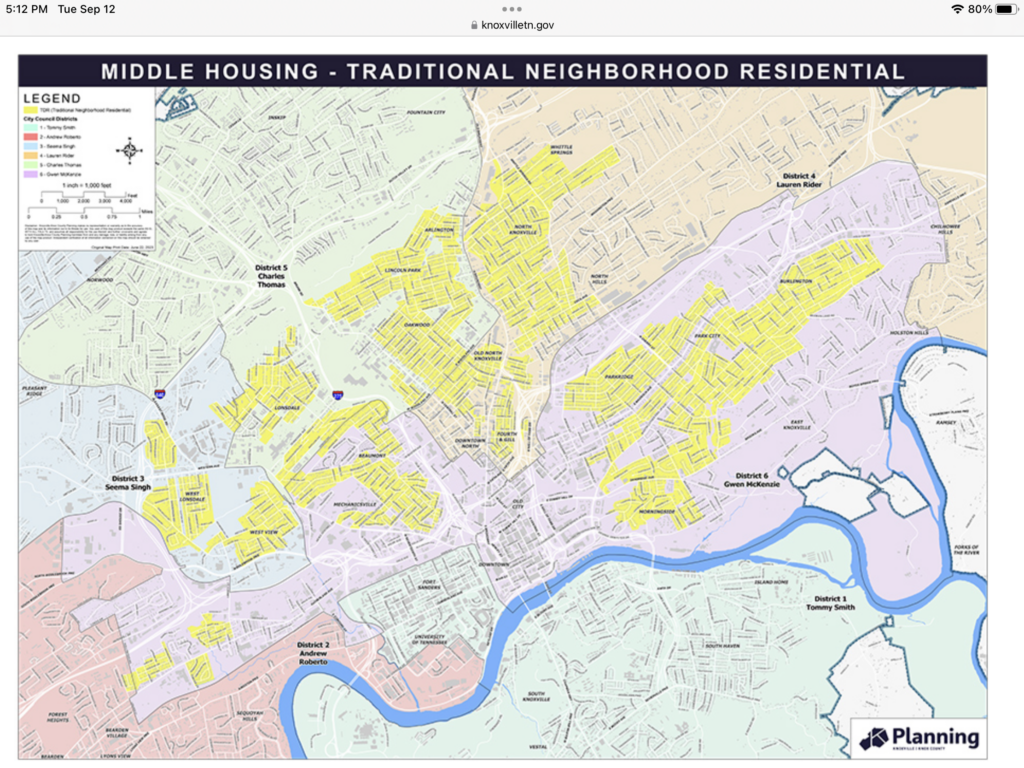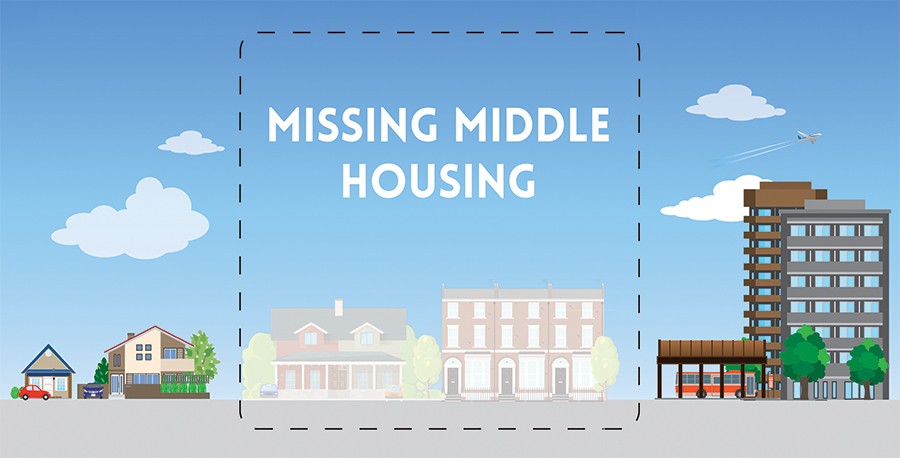The city of Knoxville has an initiative to encourage building “middle housing” as a financially attractive infill option for inner city neighborhoods which have a traditional grid street layout and nearby amenities.

Cheryl Ball
Cheryl Ball, the city’s newly appointed policy director, presented details to Town Hall East on Sept. 11.
The effort involves easing of market entry barriers such as small lot size, building setbacks and low height, along with plan-approval hoops to better enable small-scale builders to add duplexes, triplexes and townhouse-style multi-family units to available small lots (many 50-feet x 125).
The primary goal is to add more “attainable” housing at various (lower) price points than currently available. The underlying premise is Knoxville has ample single family housing subdivisions and large apartment complexes, but little in the way of affordable housing for younger folks just starting out (under age 35) or for middle-aged folks (55+) interested in downsizing, and to do it close to downtown, in walkable/ bikeable areas, near bus lines and neighborhood shopping opportunities (generally within ¼- or ½-mile).
The recent sharp rise in housing costs makes more affordable options important. Initially, at least, this effort would focus on zones that already allow some multi-family structures like duplexes (RN -2, -3, -4). The city’s target residential map shows grid-style neighborhoods mainly in East and lower North Knoxville.
How will this work? It seems primarily by removing barriers to allow denser building types on small lots – by reducing front and side lot setbacks, allowing taller buildings (at least 3 stories), multi-family units, and streamlining the construction approval process by releasing preapproved designs, and removing zone-imposed barriers like stringent building standards, reducing parking allotments, etc.
When asked, Ball said city grants or tax incentives are not contemplated, and they hoped to avoid the need to add expensive city-built infrastructure.
Background and planned coordination. Ball said discussions about this housing approach started in January but grew in earnest in April 2023, especially with help from hired consultant Opticos Design, which is involved in fostering middle housing approaches in other cities like Charlotte and Memphis. See examples of their work here.
The city’s target is to solicit additional community input in September and then move on to MPC review in October. Public meetings are set for:
- Thursday, Sept. 21, at Emerald Youth Center, 4:30-7 p.m.
- Monday, Sept. 25, at O’Connor Center, 4:30-7 p.m.
- Thursday, Sept. 28, city council workshop, 5-7 p.m.
Details about the proposal, including the consultant’s report, are on the city’s website here. You can also contact Ball directly at 865-215-4991.

Neighborhood concerns? Most folks agree more affordable housing is needed. But weighing and balancing is called for. Many “good” ideas can also foster collateral damage. It was not clear, for example, from the presentation how this will impact existing schools, available green space for recreation or potential neighborhood disruption (like crime) from added population density … especially as we drift further away from owner-occupied units, directly concerned with long-run community health.
The city says this is intended as infill for vacant lots. But, when there is a buck to be made, will it result in single-family home teardowns in these traditional neighborhoods? Knoxville has had a painful experience with high-density subsidized projects (like Walter P Taylor) which brought their own brand of problems, and recent costly efforts to replace these overly congested sites with more owner-occupied residences along Chestnut and MLK.
Let the public discussions begin!
Nick Della Volpe is a lawyer, a gardener and a former member of Knoxville City Council.

